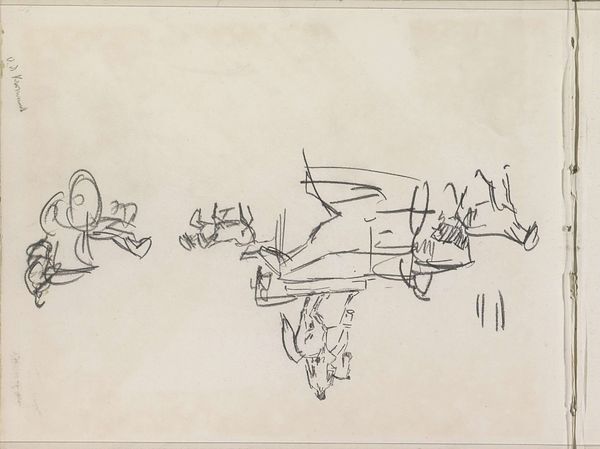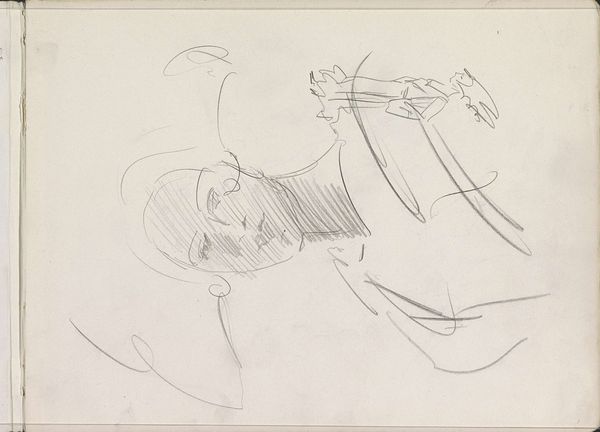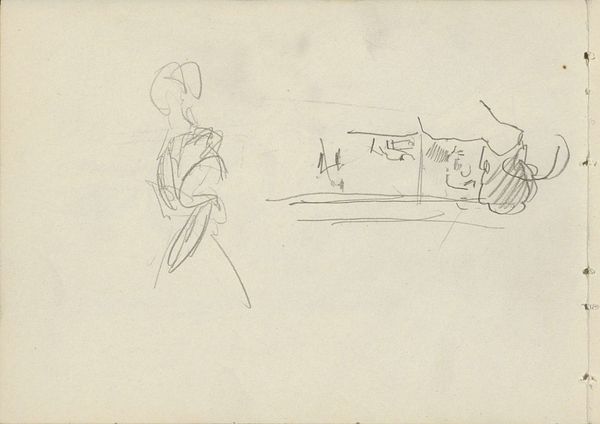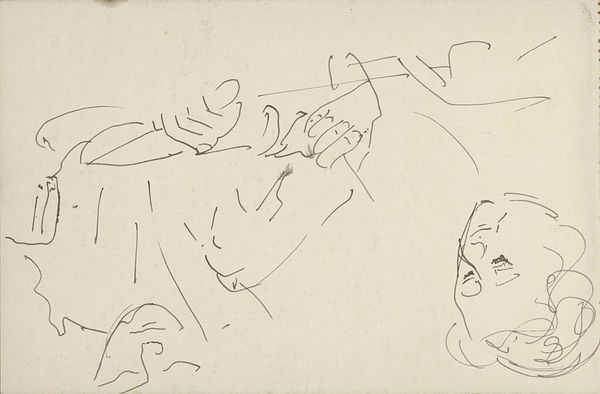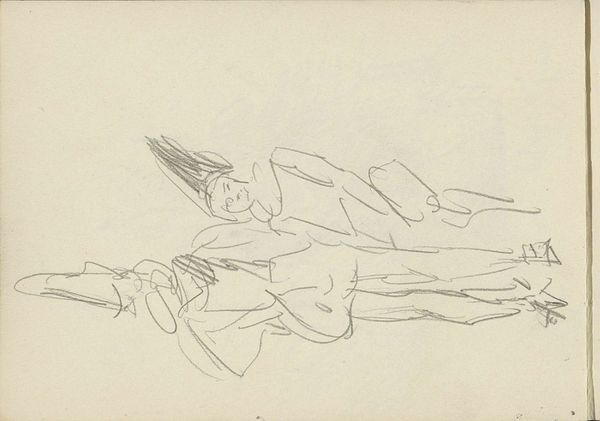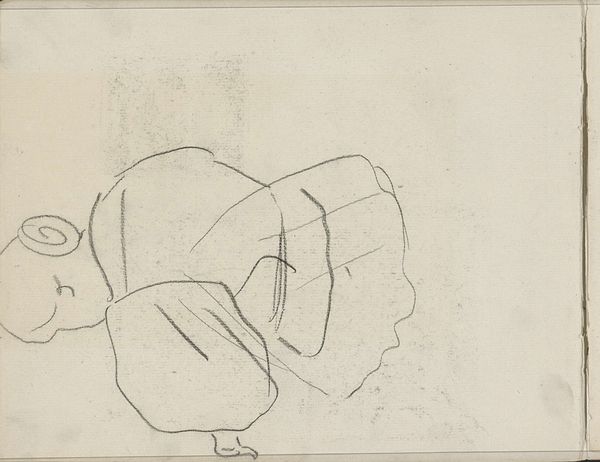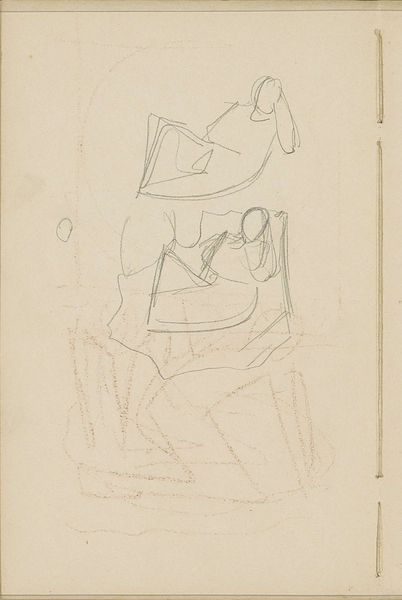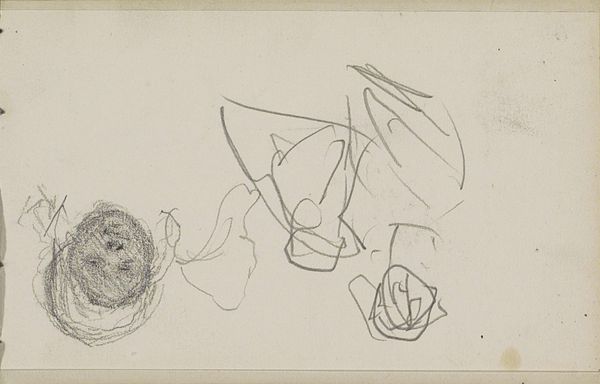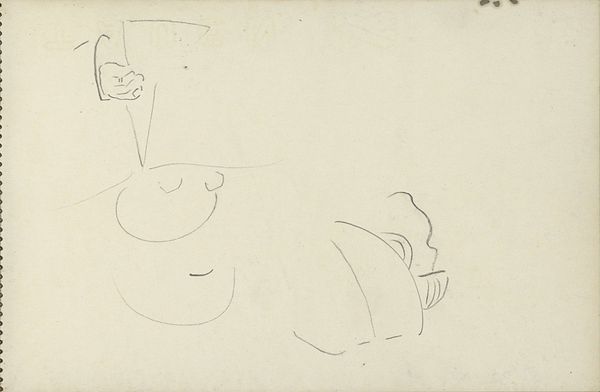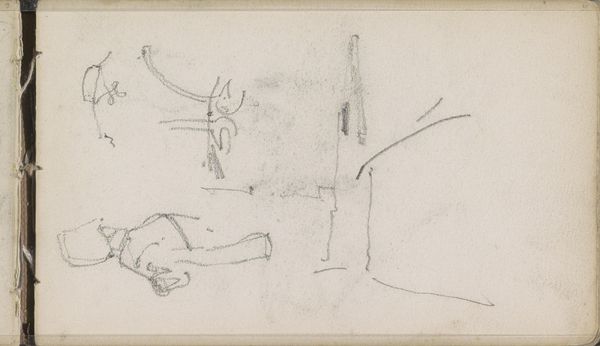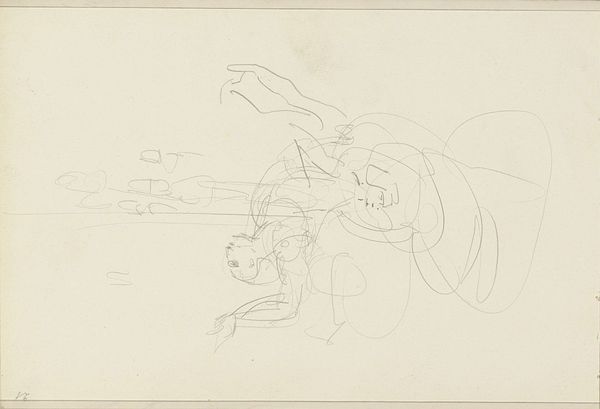
Copyright: Public Domain: Artvee
Editor: Here we have Paul Klee’s "Was läuft er," created in 1932, seemingly with pen and pencil. I'm struck by its minimalist nature, almost childlike in its simplicity, yet it also feels quite profound. What can you tell me about Klee's choices in terms of materials and technique here? Curator: It's fascinating to consider Klee's "Was lauft er" through a materialist lens. The very sparseness of the pencil line points us towards a kind of art making that embraces humble materials. Instead of focusing on virtuosity, the rough and ready quality foregrounds the labor and process of creation itself. How does that make you rethink Klee's overall project? Editor: That’s interesting because I was focusing on the ‘finished’ piece. Knowing this was made quickly, inexpensively makes me appreciate his ingenuity, his ability to convey form and movement with so little. The sketch like quality is intriguing as well. How does this challenge more conventional artistic norms? Curator: Precisely. The 'sketch' rejects the traditional hierarchy where a finished painting is seen as superior to preparatory work. Klee almost inverts that hierarchy by allowing process and experimentation to become the primary aesthetic experience. This can be linked to the Bauhaus's ethos, which sought to dissolve distinctions between fine art and craft, prioritizing functionality, material honesty, and egalitarian access to artistic tools and skills. What kind of statement do you think Klee might have been trying to make, politically or socially, about the nature of art itself? Editor: I think that by using materials that are more easily accessed, he’s taking the ‘high art’ down a few pegs. It suggests that anyone can make art, and that the ideas and expressions are what truly matter, more than fancy paints or elaborate sculptures. Thank you! That shifted my understanding of the artwork greatly! Curator: Indeed, by valorizing process and raw materials, Klee gestures toward a democratization of art. The labor of creation, the unpretentious line, and the readily available pencil all invite us to reconsider who gets to be an artist, and what art is for. That's something to reflect on as you continue your studies!
Comments
No comments
Be the first to comment and join the conversation on the ultimate creative platform.
